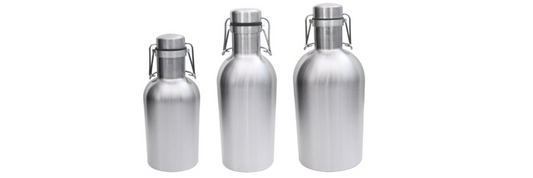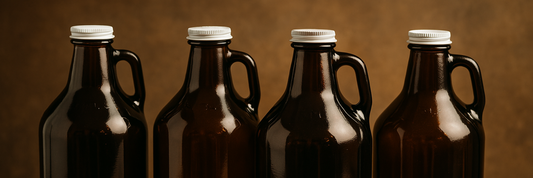Cutting boards are essential tools in every kitchen, but not all cutting boards are created equal. Among the many materials available, walnut cutting boards stand out as a top choice for both amateur cooks and professional chefs. With their stunning appearance, durability, and functionality, they offer a premium experience. In this guide, we’ll dive deep into why walnut cutting boards are so popular, how to choose the best one, and how to care for them properly.
What is Walnut Cutting Board?
Walnut cutting board is a kitchen tool crafted from walnut wood, one of the most sought-after hardwoods for its durability, rich color, and intricate grain patterns. Walnut cutting boards are used for food preparation, such as chopping vegetables, slicing meat, or dicing herbs, and are often favored for their aesthetic appeal, making them suitable as serving platters for cheese and charcuterie.
Walnut cutting boards come in various styles, including end-grain (showcasing the wood's natural fibers) and edge-grain (featuring linear wood patterns). The choice of walnut as a material makes these boards stand out for their balance of strength and softness, providing a stable cutting surface that is gentle on knives.

Pros of Walnut Cutting Boards
Aesthetic Appeal
- Walnut wood is prized for its dark brown hue, sometimes with lighter or golden streaks, giving it a luxurious and elegant appearance.
- The unique grain patterns make each cutting board a one-of-a-kind piece, adding a sophisticated touch to any kitchen.
Gentle on Knives
- Walnut wood is softer than other hardwoods like maple or oak, making it less likely to dull knife blades over time.
- This balance between hardness and softness ensures the board absorbs cuts without compromising the blade's sharpness.
Durability and Longevity
- Walnut is a durable hardwood that resists warping, cracking, and splitting when properly maintained.
- It can handle heavy use, making it suitable for chopping, slicing, and serving.
Natural Antimicrobial Properties
- Like other hardwoods, walnut has natural antimicrobial qualities that inhibit the growth of bacteria when cleaned and dried correctly.
Versatility
- These boards can serve multiple purposes, from a durable chopping surface to an elegant serving tray for cheese and hors d'oeuvres.

Cons of Walnut Cutting Boards
Higher Cost
- Walnut cutting boards are more expensive than boards made from softer woods (like pine) or alternative materials (like plastic or bamboo).
- The premium price reflects the quality, durability, and craftsmanship involved in creating the boards.
Requires Regular Maintenance
- To keep walnut cutting boards in top condition, they require periodic oiling with food-safe mineral oil or a wood conditioner.
- Neglecting maintenance can lead to drying, cracking, or dulling of the wood over time.
Less Resistant to Deep Cuts
- While durable, walnut is softer than harder woods like maple. Over time, heavy or forceful cutting can leave deeper knife marks.
Susceptible to Moisture Damage
- Walnut cutting boards are not dishwasher-safe. Prolonged exposure to water can cause warping or cracking.
- They must be dried immediately after washing to avoid moisture-related issues.
Potential Sensitivities
- Some individuals with nut allergies may have concerns about using walnut cutting boards, though the risk is generally minimal due to the nature of the wood processing.
How to Choose Best Walnut Cutting Board
Consider the Grain Type
- Edge Grain: These boards are made by aligning the wood’s edge. They are durable, affordable, and great for everyday use.
- End Grain: These boards are constructed with the wood’s end pieces. They are self-healing, showing fewer knife marks, but tend to be more expensive.
Check the Thickness
Thicker boards (at least 1.5 inches) are more stable and less likely to warp over time. Thin boards are lightweight but may not last as long.
Look for Food-Grade Finishes
Ensure the cutting board is treated with food-safe oils or finishes. Walnut boards are often pre-treated with mineral oil or beeswax to protect the surface.
Size and Shape
Choose a size that fits your kitchen space and cooking habits. Rectangular boards are the most common, but round and irregularly shaped boards are also available for serving purposes.
Quality of Craftsmanship
Inspect the board for smoothness, uniformity, and absence of cracks. A well-crafted board will have no sharp edges or uneven surfaces.
How to Care Walnut Cutting Board
Proper maintenance is key to extending the life of your walnut cutting board and preserving its beauty.
Cleaning
- Wash the board with warm water and mild dish soap after each use.
- Avoid submerging the board in water to prevent warping.
- Dry immediately with a clean towel and allow it to air dry completely.
Oiling
- Apply food-grade mineral oil to your walnut cutting board at least once a month or whenever it starts to look dry.
- Use a clean cloth to spread the oil evenly and let it absorb overnight. Wipe off any excess oil the next day.

Avoid Harsh Conditions
- Keep the board away from direct sunlight and heat sources.
- Do not use the board as a surface for cutting raw meats unless you can thoroughly clean and sanitize it afterward.
Remove Stains and Odors
- For stains, sprinkle baking soda on the affected area and scrub gently with a damp sponge.
- To eliminate odors, rub the board with half a lemon and let it sit for 10 minutes before rinsing.
Comparing Walnut to Other Cutting Board Materials
Walnut vs. Maple Cutting Board
- Walnut: Softer, darker, and more elegant in appearance. Easier on knives.
- Maple: Harder, lighter in color, and slightly more resistant to deep cuts.
Walnut vs. Bamboo Cutting Board
- Walnut: More durable and forgiving on knives. Requires more maintenance.
- Bamboo: Cheaper and eco-friendly but harder, which can dull knives.
Walnut vs. Plastic Cutting Board
- Walnut: Aesthetic and long-lasting. Ideal for both cutting and serving.
- Plastic: Budget-friendly and easy to sanitize but lacks the charm and durability of walnut.
FAQs About Walnut Cutting Boards
Are walnut cutting boards safe for food preparation?
Yes, walnut cutting boards are food-safe when properly maintained. Their natural antibacterial properties add an extra layer of safety.
How often should I oil my walnut cutting board?
You should oil it once a month or whenever it looks dry. Regular oiling prevents cracking and keeps the wood hydrated.
Can I cut raw meat on a walnut cutting board?
Yes, but you need to clean and sanitize the board thoroughly afterward to prevent cross-contamination.
Do walnut cutting boards dull knives?
No, walnut is gentle on knives, making it an excellent choice for maintaining sharp edges.
How long do walnut cutting boards last?
With proper care, a walnut cutting board can last for many years, even decades.
Conclusion
A walnut cutting board is more than just a kitchen tool—it's an investment in quality, aesthetics, and functionality. Whether you’re an avid cook or someone who loves hosting dinner parties, a walnut board is a versatile and durable choice that adds sophistication to your kitchen. By choosing the right board and caring for it properly, you’ll enjoy its beauty and performance for years to come.









